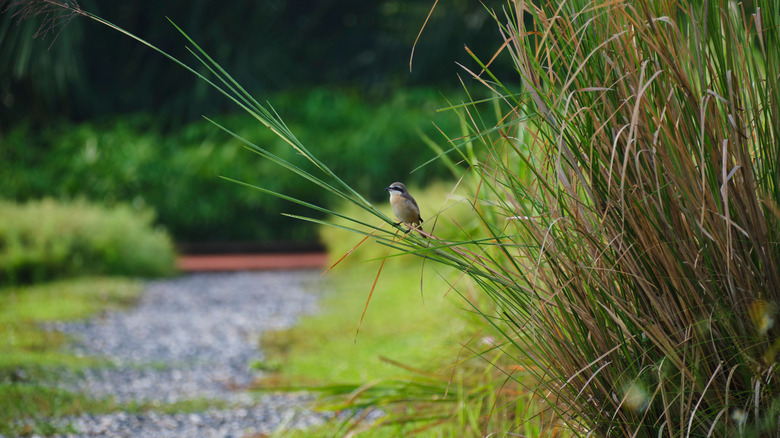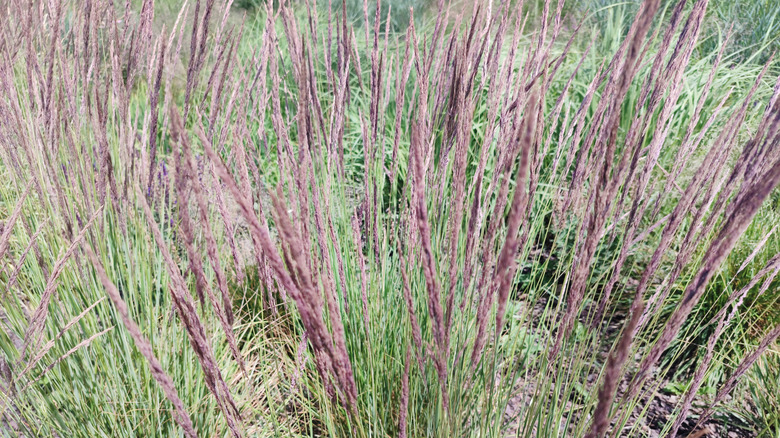The Fall Grass To Grow In October To Attract More Birds
There are many advantages to creating a bird haven in your backyard, especially during the fall and winter seasons when it is much harder for birds to find food and shelter. Growing ornamental grasses is one excellent way to provide not only food, but also shelter for birds and other wildlife, and there are plenty of unique types of grass to plant that birds can't resist. One lovely ornamental grass you might want to consider planting in October is little bluestem (Schizachyrium scoparium).
This perennial grass is native to the eastern part of North America and can be found growing naturally in open wooded areas, roadside ditches, fields, and prairies spanning from Canada all the way down to Florida and over to Arizona. It is hardy in USDA zones 3 through 9 and can handle a variety of climates.
During the summertime, little bluestem has a blueish tint on the base of its grassy foliage, but in fall, the colors take an exciting shift. The strappy leaves turn a lovely copper-orange hue, and the plant produces stunning purple/bronze flowers on tall racemes that appear around August. These add pops of vivid color to your yard. After the flowers have bloomed, the grass produces bunches of silver-white seed heads that are fluffy and will stick around into winter. Birds love these seeds and also find nice hiding spots among the grass throughout the winter months. If you want to create an inviting space the birds will return to year after year, plant low-maintenance little bluestem ornamental grass and follow a few more tips that will turn your yard and garden into a bird haven.
How to plant and care for little bluestem grass
Little bluestem is ideal for improving erosion control on hills and banks, makes a great addition to wildflower and rock gardens, and adds lovely color to any space during the fall. It thrives best in full sun with well-draining, dry to medium moist soil. While it can handle a little bit of shade, you will notice less color and vitality in little bluestem grass that is growing in shadier areas. Once planted, water your grass on a regular basis during the first year, so it becomes well-established with a strong, deep root system. After the first growing season, you can reduce the amount of water you provide and let natural rain take care of its water needs, except during severe and extended dry periods.
Little bluestem requires little to no fertilizer because it will grow easily in poor and rocky soils. Too much fertilizer, or soil that is too rich and fertile, can cause the stems to flop over at the base. Drier soils that are not as rich encourage grasses that are stronger with shorter, more robust stems. Proper pruning encourages your little bluestem to produce new, healthy growth year after year. The best time to prune is in late winter or early spring, with early spring being preferable, so the birds have a food source all winter long. Finally, you might want to add another winter gardening task that will prep your yard for spring birds, like creating a brush pile, so you can watch your dream of having a bird haven come to life.

